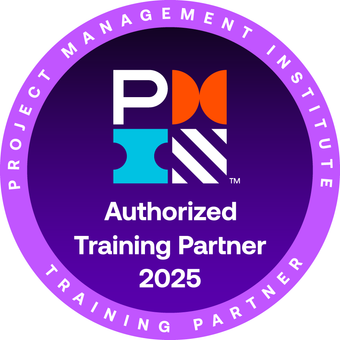Transcript: Project Communications Even Your Sponsor Will LOVE
This episode is sponsored by:
Welcome to the PMO Strategies Podcast + Blog, where PMO leaders become IMPACT Drivers!
NOTE: For the very best experience, listen to this episode on your favorite podcast provider here.
What’s the biggest determining factor in success or failure of a project or any change you are trying to create? Communication, right? It’s all about communication. Even though it’s the most important factor, many of us are struggling to get our message across to our executives because of how we are communicating.
Have you ever been in a status meeting where you had to provide a report to your executives? You’re about halfway through this meeting and they are on page 14 in the bottom right-hand corner stuck on some piece of data. You can’t get them to come back up and focus where you need them to be. They’re stuck, right? They’re drilling down into these details of this report, they’re asking you all types of questions, and you’re thinking to yourself, “This isn’t even relevant to what I need from you. I need some answers. I need some help on something. I need a decision. I need you to take action,” and they’re stuck on page 14.
You’re not getting the outcomes that you needed from that meeting. It’s over. Your problems are not getting solved. Decisions are not being made. You’re thinking, “Are you kidding me? I’m here to make this project move forward, and I can’t make any progress because my executive is drilling down into all these details.”
Let me ask you…who put that report in their hands?
We put a lot of detailed information in front of executives and we expect that they have time to process that information. They don’t. They’re busy. I’ve been fortunate enough to be one of those executives in organizations ranging from small companies to global firms. Those that have worked with me learn quickly that if you don’t give me the bottom line, I am not going to have time to process it. It’s not that I was not interested, but as a leader, I needed clear, simple, and focused information because I had a lot to do. Expectations are high and seem to be growing at a rapid pace. To keep up with that pace, leaders need to think and act differently.
This is the biggest problem that we see in reporting and communicating with our executives. Somebody told us we needed to provide 14 pages of detail and now here they are stuck down at the bottom of page 14. You’re not making any progress with your project, and now you have to go back to your project team and say, “Well, we had a meeting, but now we have to have another one.” I am willing to bet that you’re going to have to have another one after that, just to get to what you needed. Three meetings in, you finally got the decision you needed but now you are further behind on your project and have to go back to the executives to explain why your project just went from green to yellow…or red. And so the vicious cycle continues…
Did it really have to happen that way? How much time was wasted?
My advice to you: Tell them what they need to know, then stop. Just stop! You need to give them the who, what, when, where, why, and how. Then, stop and let them absorb this information and give you what you need.
The stakeholders on your project, your executives and your sponsors, are there to serve you. They don’t know it yet, but your job is to teach them how to be a sponsor. Part of that is in how you’re communicating with them. They are trainable. I promise.
We all think our project is the most important, don’t we? Of course, it is! Which means we should be doing more to protect it. We should be finding ways to get to the bottom line quickly so that we can manage up to our executives and tell them what we need from them so that they can act for us. You should have an elevator pitch in your mind at all times.
Follow these steps to create a dashboard for your executives that helps you accelerate your project progress. And, because I’m always asked when I talk about this topic…if you want more when you read this, scroll down to the bottom to find out how you can get access to our free template or training programs to teach you how to use our extremely popular One Page Executive Dashboard.
1. Summary: Put the bottom line up front (BLUF). Clearly state what they need to know (your elevator pitch). This is the conversation for when you have the executive in the elevator to say, “How we are doing” in as few words as possible and not a repeat of items later in the report. Keep it to 3-5 sentences.
2. Decisions Made: What decisions have been made on the project and what was the impact of those decisions. Do not use this as a way to point fingers. “We had to make this decision because IT’s taking forever, even though we were late giving them our requirements, but we’re not going to talk about that.” The best thing to do is to be as factual as possible in providing the information.
3. Items Requiring Management Attention: Use this to manage your sponsors. IRMA means, “I want you to do something,” so put it in those terms. Management appreciates directness and guidance on how they can help. This is how you train them. What is the issue and what, specifically, you want management to do. Executives love simplicity, pictures, and when you answer their (sometimes unspoken) request to, “Show me what to focus on.”
4. Activities Accomplished: Activity and benefit. This is not a laundry list of everything you’ve done!! Don’t list a bunch of random activities. What’s the “so what”? What’s the benefit realized as a result of the activities that took place? Again, this seems very simple, but putting it in terms that the executive can process quickly means they can get the big picture in their head so you can focus them on where and how they can help.
5. Planned Activities: Simply state the activity and the expected results. What’s the thing we’re going to do and the expected outcomeHighlights only. When this major milestone is completed, this will be the outcome.
6. Transparency: The fastest way to change behaviors is to give people information. If you stick to the facts, you really don’t need to worry about who reads it. We’re often worried about how people are going to feel when they look at it, but if you are very clear with facts, they cannot be disputed. When you get pushed back, you say, “Wait did you see that happen? That happened? Okay, that’s what we’re going to talk about here.” Then shift the conversation to focus on what we are going to do about what the facts are telling us.
7. Leverage colors to represent progress toward baseline. If you are still in the initial stages of the project, you have no baseline. You don’t have a plan yet, so why are you putting green on your status? Colors are used as a simple indicator of measurement, but you have nothing to measure against…yet. As a way to educate our executives, before we’ve got a plan that’s been baselined that everyone’s agreed to, don’t put a color on it. Instead, have a box that’s blank or something to indicate absence of color (good example of this in our one page dashboard). Additionally, when the project is over, it doesn’t stay in red/yellow/green. It goes to black. Black means done. Closed. No room for “but I just have one more requirement”. Show’s over, baby, go home! Your project will never end if you keep the “open for business sign” on the door.
8. Tell your story in data: Show major deliverables and milestones and how you are progressing toward them in a chart. This is not the entire project schedule. This is a list of only the top line milestones that drive the overall project timeline. These are the deliverables that are using all of the resources, costing all of the money. Speaking of money, be transparent and current. What is our budget, how are we tracking to that budget, where do we project we will be? Is it on track, at risk of being off track, or actually off track? Provide commentary (in 5 words or less) to explain how you will get back on track, if off track, or how you got back on track if you are newly “green”.
9. Use issues and risks to manage expectations: Make sure management isn’t blindsided. Communicate risks in terms of the impact if the risk were to be realized. Do the same thing for issues. What is the impact we saw when the issue happened, and what we are going to do to react or respond to this issue. Don’t just say, “It’s going to be hard to fix.” Many executives despise obtuse language. You can’t act or communicate on generalities effectively. Be specific and precise.
10. Finally, make it a habit: Make your report a living document for your own sanity. If you wait until the day it is due to try to recall all the main points of your project communication, you will miss things and it will take you much longer to complete. Start using it to note the big rocks you are moving up the hill. I always suggest doing it at the weekend as opposed to the beginning of the week because by Monday I have no idea what I did last week. If your weekends are as busy as mine, you are going to have trouble remembering what you did last week if you haven’t been writing it down.

Join us in the IMPACT Inner Circle membership program!
A note on change resistance…you will likely have it.
What if “they” say they need that 15 pages of detail? Try this tactic. Use the one page summary form. If they say, “Okay, but where is my 15-page report (I wasn’t reading anyway)?” Say, ”I’ve created a cheat sheet version to summarize it for you because I realize how busy you are and this is easier to keep with you should you need it. Show them where the same information is in the larger report they requested. If we were to only do this shorter report, we would save XXX in terms of time/money. If you like that other detail, we can talk about the cost to the organization for doing so.” Put it in terms that make it hard for them to say no. Who’s going to say to you, “Absolutely, I would like you to waste money putting that report together (that I wasn’t reading anyway)!”
Change the conversation. I have never heard an executive say, “Make my life more difficult and give me more work to do.” Have you ever said that? They’re not saying it either because they are busy. You can’t even get on their calendars for weeks or months because they have so many meetings. The more you can do to streamline the conversation around what you need, the more effective you will be at executing on your projects. We train for the behaviors we want to see.
The right reporting will become your sponsor’s communication tool when they speak to their peers and their boss. That’s powerful. Make them look good and they will make you look good. Arm them with the information they need to make good decisions and give them the information they need to communicate up to their leadership about what’s going on with your project. Your dashboard now becomes the conversation.
And that’s just the left half of the dashboard…
T hanks for taking the time to check out the podcast!
hanks for taking the time to check out the podcast!
I welcome your feedback and insights!
I’d love to know what you think and if you love it, please leave a rating and review in your favorite podcast player. Please leave a comment below to share your thoughts. See you online!
Warmly,
Laura Barnard



